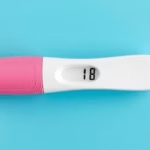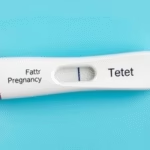Understanding Implantation Bleeding While Ovulating
When discussing implantation bleeding while ovulating, it is essential to clarify what both terms represent within the context of the menstrual cycle and pregnancy. Implantation bleeding occurs when a fertilized egg attaches itself to the uterine lining, which can lead to light spotting or bleeding. This event typically happens about six to twelve days after conception, aligning itself closely with the timing of ovulation.
The significance of recognizing implantation bleeding lies in its potential to indicate early pregnancy. For many women, it can be a subtle yet vital sign that fertilization has occurred. This bleeding can be distinguished from menstruation by its lighter color and shorter duration. Clarity about these terms and their relationship to one another is crucial for women who are trying to conceive or those monitoring their reproductive health.
1. Identifying the Symptoms of Implantation Bleeding
Understanding the symptoms associated with implantation bleeding is crucial for women aiming to discern between this phenomenon and their regular menstrual cycle. Typically, the symptoms vary, but some common indicators include:
Recognizing these symptoms can help distinguish between normal menstrual bleeding and early pregnancy signs. If the bleeding is lighter or shorter than one’s typical period, it might suggest implantation rather than menstruation.
It’s vital for women to pay attention to their cycles and any unexpected changes that occur, as these could indicate various health aspects. If you are in the early stages of trying to conceive, monitoring signs of implantation bleeding can offer valuable insights into your reproductive health.
2. The Timing of Implantation Bleeding
The timing of implantation bleeding is an essential aspect to consider when analyzing fertility signs. Generally, implantation takes place roughly 6 to 12 days after conception, which often coincides with or follows ovulation. For women with regular menstrual cycles, ovulation typically occurs around the midpoint of the cycle, approximately 14 days before the onset of menstruation.
Understanding this timing helps pinpoint the potential for implantation bleeding. If you experience subtle bleeding or spotting during this window, it may suggest that implantation has successfully occurred. If this bleeding occurs well beyond this timeframe, it is more likely associated with an upcoming menstrual cycle.
The relationship between ovulation and implantation is significant, particularly for those trying to conceive. By tracking ovulation through methods such as basal body temperature or ovulation predictor kits, women can better anticipate the timing of possible implantation bleeding.
3. The Difference Between Implantation Bleeding and Menstrual Bleeding
Many women often confuse implantation bleeding with menstrual bleeding, leading to potential misunderstandings regarding early pregnancy. The two types of bleeding have some distinctions worth noting:
- Color: Implantation bleeding is typically lighter in color, such as pink or brown, while menstrual blood is usually bright red.
- Flow: Implantation bleeding is usually much lighter and may consist merely of spotting, whereas menstrual flow can be heavier.
- Duration: Implantation bleeding usually lasts from a few hours to up to three days, contrasting with menstrual bleeding, which typically lasts 3 to 7 days.
Being able to differentiate between these types of bleeding is essential for women, especially those who are trying to conceive.
4. Causes of Implantation Bleeding
Implantation bleeding occurs due to the process of the fertilized egg embedding itself into the uterine lining. The disruption of the uterine lining during this process can cause small blood vessels to break, leading to light bleeding or spotting. Therefore, it is a natural outcome of conception.
This bleeding does not usually indicate any problems or complications with the pregnancy but instead signifies an essential step in successful implantation. Knowing the cause of implantation bleeding aids in discerning the normal physiological processes at work when trying to conceive.
5. How to Track Your Cycle for Fertility Awareness
Many women interested in understanding implantation bleeding while ovulating benefit from tracking their menstrual cycle. Awareness of cycle changes can offer significant advantages, especially when attempting to conceive:
Some common methods for tracking include:
- Calendar Method: Mark the start and end of your period to predict ovulation.
- Basal Body Temperature: Monitor your temperature daily to detect ovulation when a slight increase is noted.
- Ovulation Predictor Kits: These kits indicate hormonal changes that signal ovulation.
By understanding one’s cycle, women can identify the optimal time for conception and recognize potential signs of implantation bleeding.
6. Emotional Impact of Implantation Bleeding
Experiencing implantation bleeding can evoke various emotions, particularly for women who are trying to conceive. Emotions can vary from excitement to anxiety as women interpret signs that may indicate pregnancy.
The psychological component is important when undergoing fertility awareness. It’s common to feel a flood of hope or concern when checking for signs. Being informed about the nature of bleeding can help frame these emotions more appropriately and prevent undue stress.
7. When to Consult a Healthcare Professional
If there are uncertainties about implantation bleeding, it’s advisable to consult with a healthcare professional. Some signs might necessitate medical advice, including:
- Heavy bleeding that resembles a menstrual flow
- Severe cramping that is irregular
- Bleeding accompanied by other concerning symptoms
Seeking professional guidance is always prudent when experiencing unusual symptoms or when in doubt about pregnancy-related signs, ensuring both peace of mind and physical health.
8. Common Misconceptions About Implantation Bleeding
Many misconceptions surround implantation bleeding, which can lead to confusion. Common myths include:
Clearing up these misconceptions is vital for women navigating the realms of pregnancy and menstruation. Dispelling myths can lead to greater reproductive health awareness.
9. Lifestyle Changes to Support Healthy Reproductive Health
Maintaining healthy reproductive health can be beneficial in improving the chances of conception. Some lifestyle changes include:
- Eating a balanced diet rich in vitamins and minerals
- Engaging in regular physical activity
- Avoiding excessive alcohol and tobacco use
- Managing stress levels through relaxation practices such as yoga or meditation
By incorporating these lifestyle changes, women can better their overall reproductive health and potentially heighten their chances of successful conception and the early detection of implantation bleeding.
10. Importance of Regular Health Check-Ups
Regular health check-ups play a crucial role in maintaining reproductive health. Women actively trying to conceive should plan routine visits with a healthcare professional to monitor and optimize their reproductive health status. Regular check-ups can help identify any underlying health conditions that may affect fertility.
Discussing any concerns related to ovulation, periods, or potential pregnancy signs with a healthcare provider can result in better insights and understanding. Always prioritize health and wellness to facilitate a successful reproductive journey.
Final Thoughts
Understanding the nuances associated with implantation bleeding while ovulating provides valuable insights into the complexities of female reproductive health. Recognizing symptoms, differentiating between bleeding types, and tracking cycles contribute to a comprehensive understanding of one’s fertility status.
If you experience light spotting around the time of your ovulation, it might indicate that fertilization and implantation have taken place. This spotting is not to be mistaken for menstrual bleeding, as several characteristics distinguish the two. Monitoring symptoms and understanding the timing can empower women trying to conceive, providing clarity within their reproductive journey.
Seeking guidance from healthcare professionals when needed ensures that you remain informed and mitigates any potential anxieties associated with early pregnancy signs. Clearing up myths surrounding implantation bleeding and fostering reproductive awareness leads to improved health and better emotional experiences during the conception journey.
In summary, knowing about implantation bleeding while ovulating helps women better understand their bodies and the pivotal signs of pregnancy. By tracking menstrual cycles, recognizing signs of bleeding, and adopting a proactive approach towards reproductive health, potential challenges can be addressed effectively.
Frequently Asked Questions
Q: How can I differentiate between implantation bleeding and menstrual bleeding?
A: Implantation bleeding is usually lighter in color and flow, lasting only a few hours to three days, while menstrual bleeding is heavier and lasts longer.
Q: Can all women experience implantation bleeding?
A: Not all women experience it. Some may notice spotting, while others may not see any signs at all.
Q: What should I do if I experience heavy bleeding?
A: Heavy bleeding resembling a menstrual flow is a concern; consult a healthcare professional for advice.
Q: Can lifestyle changes impact implantation outcomes?
A: Yes, maintaining a healthy diet, exercising, and managing stress can enhance overall reproductive health and potentially improve chances of conception.
Q: Should I see a doctor if I suspect implantation bleeding?
A: If you experience unusual symptoms or have concerns, it’s wise to seek medical advice to ensure your reproductive health is optimized.
Further Reading
What Type of Psychotherapy Is Best for Anxiety?







